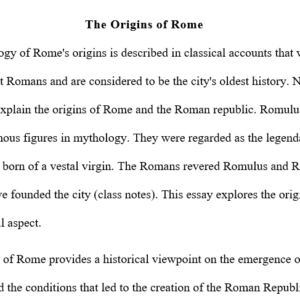Description
Myths are stories that a people tell themselves about the world in which they live and their place in this world. Rather than being limited to literal truths, myths draw upon allegory, metaphor, and symbols, requiring contemplation and fluid in meaning. Myth is thought to convey deeper truths and a reality more genuine than objective facts. Put another way, it was believed that objective facts and material existence, alone, cannot convey the truth of an existence filled with feelings, cosmic meaning and greater truths. In fact, the ancient civilizations began story-telling and the creation of histories with what we refer to today as myth, rather than a collection of known facts. This reality offers us a clue to the thought processes and perceptions with which ancient peoples approached a daily life, apparently infused with signs and symbols to read and larger meanings contemplate and understand.
By extension, a creation myth is a symbolic narrative of how the world or a people began. In the society in which it is told, a creation myth is usually regarded as conveying profound truths- metaphorically, symbolically, historically and literally, where appropriate. They provide order and unity, and propose to tell a people who they are and where they are going.
As you read the Roman creation myth below, consider the story being told with an awareness of symbols, profound truths, and the nature of myths. Then, write a response regarding your interpretations and/or something/s that stand out as note-worthy. Consider what this creation myth can tell us about the Romans who called it their own. By the middle of next week, respond to at least two responses provided by others. You will be able to see posts created by classmates after submitting your own.
2-3 paragraphs
The Origins of Rome
Aeneas, the hero of the Trojan War, had a son, Ascanio. This son established the city of Alba Longa on a high cliff above the river, Tiber, and administered this settlement quietly, followed by his son and grandsons, including King Numitor.
Amulius, brother of King Numitor, coveted power. Consequently, he dethroned Nimitor, his brother, and killed the king’s male heirs. Nimitor’s daughter, Rhea Silvia, was spared and made to be a Vestal Virgin, sworn to chastity and charged with keeping a sacred fire which was never to be extinguished.
Rhea, however, gave birth to twins, Romulus and Remus. Some said their father was the god, Mars, others said, it was the demigod, Hercules. Furious, Amulius imprisoned Rhea and condemned the babies to death. Rather than drown Romulus and Remus in the flooded river, Tiber, however, Amulius’ servants placed the babies in a basket and set it adrift to tempt fate.
Fate determined that the twins would be discovered downstream by a she-wolf, the sacred animal of Mars. Rather than devour the babies, the she-wolf took them to her lair and allowed the brothers to nurse. The babies were also fed by a woodpecker to give them strength until discovered by a shepherd. The Shepherd and his wife raised the boys to keep watch over their flock and livelihood.
The brothers proved to be natural leaders and eventually avenged their grandfather, Nimitor by killing King Amulius.
Romulus and Remus’s set out to create a new city, and wandered across seven hills and valleys. Remus wanted to start the city on the Aventine Hill, while Romulus fancied the Palatine Hill. To resolve their disagreement, the brothers turned to an augury by which birds are observed for signs of divine approval. Remus claimed to have noticed six birds on his chosen hill, whereas his sibling had observed twelve upon his own. Remus countered by arguing that birds appeared on his hill first. The brothers could not agree: Do the gods express favor through more birds or the earliest appearance of birds?
Without a consensus but certain the gods smiled upon him, Romulus commenced to lay the foundations of a city by building a wall on his hill. When his brother, Remus scaled the wall with insults, Romulus defended his honor and that of “Rome” by killing him. After Romulus had completed the construction of the new city with his band of soldiers, he led a raid on a neighboring tribe, the Sabines, and kidnapped their women to bear the children of Rome.
According to the myth, this occurred in 754 BC.
Hence, Rome received its name from its founder Romulus, the son of either the war god Mars or the demigod warrior, Hercules, and a descendant of the Trojan hero, Aeneas. Romulus was the first king. Romans believed that, altogether, their city was ruled by seven different kings in succession. After Romulus, king Numa Pompilius regulated Roman religion and created many of the priestly colleges and positions that continued to exist thereafter.
The seventh and final king, however, Tarquin the Proud, was known for his brutality and that of his sons. One son is said to have raped, Lucretia, the beautiful and virtuous wife of the nobleman Lucius. After exacting an oath of vengeance against the Tarquins from her husband and father, Lucretia stabbed herself to death. Lucius Junius Brutus then led the enraged populace in a rebellion that drove the Tarquins from Rome. The defenders elected two consuls to govern the city. The event marks the foundation of the Roman Republic.




